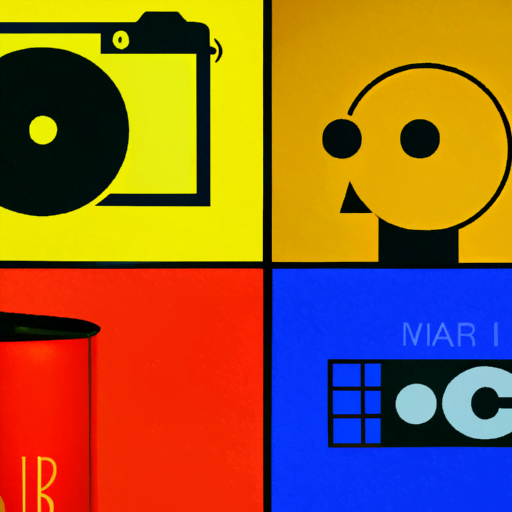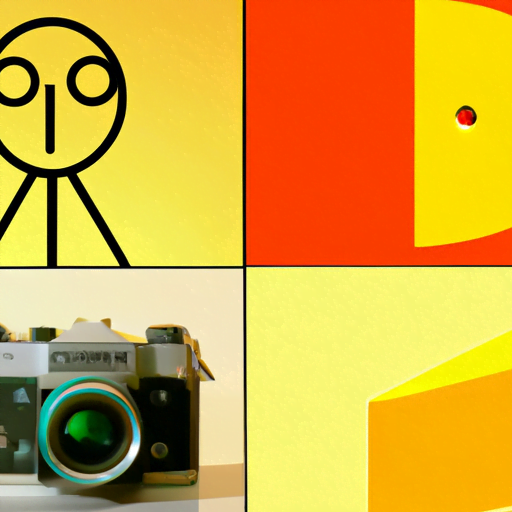
-
Table of Contents
Bruno Munari: A Pioneer of Design and Creativity

Bruno Munari was an Italian artist, designer, and inventor who made significant contributions to various fields, including graphic design, industrial design, and children’s books. His innovative approach to design and his relentless pursuit of creativity have left a lasting impact on the world of art and design. In this article, we will explore the life and work of Bruno Munari, his design philosophy, and his enduring legacy.
Early Life and Education
Bruno Munari was born on October 24, 1907, in Milan, Italy. From a young age, he showed a keen interest in art and design, and his parents encouraged his creative pursuits. Munari attended the School of Art in Milan, where he studied painting and sculpture. However, he soon realized that his true passion lay in the world of design.
During his early years as a designer, Munari experimented with various artistic styles and techniques. He was influenced by the avant-garde movements of the time, such as Futurism and Constructivism. These influences can be seen in his early works, which often featured bold geometric shapes and dynamic compositions.
Design Philosophy
Munari’s design philosophy was centered around the idea of simplicity and functionality. He believed that good design should be accessible to everyone and should serve a practical purpose. Munari once said, “Design is not just what it looks like and feels like. Design is how it works.”
One of Munari’s most famous design principles was the concept of “useless machines.” These were machines that served no practical purpose but were designed purely for the sake of creativity and playfulness. Munari believed that by creating these useless machines, he could encourage people to think outside the box and explore new possibilities.
Munari also emphasized the importance of experimentation and play in the design process. He believed that by approaching design with a childlike curiosity, designers could discover innovative solutions and push the boundaries of their craft. Munari’s book “Design as Art” explores these ideas in depth and has become a seminal work in the field of design.
Contributions to Graphic Design
One of Munari’s most significant contributions to the field of design was his work in graphic design. He was a pioneer of the use of photography and photomontage in graphic design, and his innovative approach to typography and layout revolutionized the field.
Munari’s use of photography in graphic design was groundbreaking at the time. He believed that photography could be used as a powerful tool for communication and expression. Munari’s photomontages often combined elements from different photographs to create surreal and thought-provoking images.
In addition to his work in photography, Munari also experimented with typography and layout. He believed that typography should be treated as a visual element and not just a means of conveying information. Munari’s use of bold, unconventional typography and his innovative layouts helped redefine the way designers approached graphic design.
Industrial Design and Inventions
In addition to his work in graphic design, Munari also made significant contributions to the field of industrial design. He believed that good design should be accessible to everyone and should improve people’s lives.
One of Munari’s most famous industrial design projects was his “Useless Machines” series. These were everyday objects that were redesigned in playful and unexpected ways. For example, Munari created a chair that could be folded into a flat surface or a lamp that could be worn as a hat. These designs challenged traditional notions of functionality and encouraged people to think creatively about the objects they interacted with every day.
Munari also invented several practical and innovative products throughout his career. One of his most famous inventions was the “Xerograph,” a machine that allowed artists to create copies of their drawings using a photographic process. This invention revolutionized the field of printmaking and made it more accessible to artists.
Children’s Books and Education
In addition to his work in design, Munari was also a prolific author and illustrator of children’s books. He believed that children had a natural curiosity and creativity that should be nurtured and encouraged.
Munari’s children’s books were characterized by their simple, playful illustrations and their interactive elements. He believed that books should be more than just a passive reading experience and that they should engage the reader’s senses and imagination.
One of Munari’s most famous children’s books is “Bruno Munari’s ABC.” In this book, Munari used simple shapes and colors to teach children the alphabet. The book was a commercial success and has since become a classic in the world of children’s literature.
Legacy and Influence
Bruno Munari’s innovative approach to design and his relentless pursuit of creativity have had a profound impact on the world of art and design. His work continues to inspire designers and artists around the world.
Munari’s emphasis on simplicity and functionality in design has become a guiding principle for many designers. His belief that good design should be accessible to everyone and should serve a practical purpose has shaped the way designers approach their craft.
Furthermore, Munari’s playful and experimental approach to design has encouraged designers to think outside the box and explore new possibilities. His concept of “useless machines” and his belief in the power of play have inspired countless designers to push the boundaries of their craft and create innovative solutions.
In conclusion, Bruno Munari was a true pioneer of design and creativity. His innovative approach to design, his emphasis on simplicity and functionality, and his belief in the power of play have left a lasting impact on the world of art and design. Munari’s work continues to inspire and influence designers and artists around the world, and his legacy will undoubtedly endure for generations to come.
